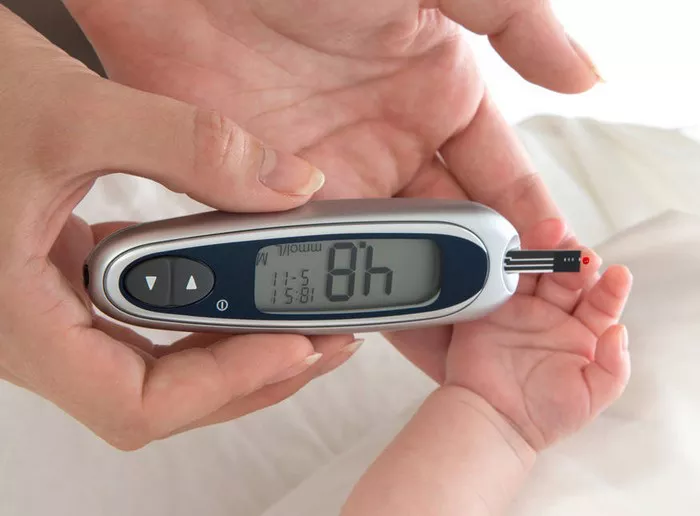Gestational diabetes mellitus (GDM) poses significant risks to both maternal and fetal health. It is a condition characterized by glucose intolerance that develops or is first recognized during pregnancy. While there are clear diagnostic criteria for GDM, there exists a gray area where blood glucose levels fall between normal and diabetic ranges, termed borderline gestational diabetes. This article aims to elucidate the nuances of borderline GDM, including its diagnosis, management strategies, and potential implications for both mother and child.
Defining Borderline Gestational Diabetes
Borderline gestational diabetes represents a diagnostic challenge in obstetric care. It refers to blood glucose levels that are elevated but do not meet the threshold for a diagnosis of gestational diabetes according to established criteria. These criteria often rely on glucose tolerance tests conducted between 24 and 28 weeks of gestation.
The American College of Obstetricians and Gynecologists (ACOG) defines gestational diabetes based on the results of a 2-hour 75-gram oral glucose tolerance test (OGTT). According to ACOG guidelines, a diagnosis of gestational diabetes is made if any of the following plasma glucose values are met or exceeded:
- Fasting: 92 mg/dL or higher
- 1 hour: 180 mg/dL or higher
- 2 hours: 153 mg/dL or higher
However, when glucose levels fall slightly below these thresholds, clinicians are faced with the dilemma of managing patients who may still be at increased risk of adverse outcomes associated with GDM.
Diagnostic Challenges and Considerations
The diagnosis of borderline gestational diabetes underscores the limitations of current screening and diagnostic approaches. While OGTT is the gold standard for diagnosing GDM, its sensitivity and specificity are not absolute. Factors such as variations in glucose metabolism, maternal body mass index (BMI), and ethnic background can influence test results.
Furthermore, the thresholds used to define gestational diabetes are based on associations with adverse pregnancy outcomes rather than precise physiological markers. As such, the clinical significance of glucose levels just below these thresholds remains uncertain.
In light of these challenges, clinicians must adopt a nuanced approach to the interpretation of OGTT results. Consideration should be given to individual patient characteristics, including pre-existing risk factors such as obesity, family history of diabetes, and previous gestational diabetes.
Management Strategies for Borderline Gestational Diabetes
The management of borderline gestational diabetes centers on optimizing maternal glycemic control to minimize the risk of adverse outcomes for both mother and child. While intensive interventions may not be warranted for every patient with borderline GDM, proactive monitoring and lifestyle modifications are recommended.
Dietary counseling plays a central role in the management of borderline gestational diabetes. Patients should be advised to adhere to a balanced diet that emphasizes whole grains, lean proteins, fruits, and vegetables while limiting refined sugars and carbohydrates. Close monitoring of carbohydrate intake and portion sizes can help stabilize blood glucose levels throughout the day.
Regular physical activity is another cornerstone of management for borderline GDM. Exercise not only helps regulate blood glucose levels but also contributes to overall maternal health and well-being. Women with borderline gestational diabetes should aim for at least 30 minutes of moderate-intensity exercise most days of the week, as recommended by the American Diabetes Association.
In cases where lifestyle modifications alone are insufficient to maintain glycemic control, pharmacological interventions may be considered. While insulin therapy is the traditional treatment for gestational diabetes, its role in borderline cases is less clear. Oral hypoglycemic agents such as metformin may offer an alternative for some patients, although further research is needed to elucidate their safety and efficacy in this population.
Implications for Maternal and Fetal Health
The implications of borderline gestational diabetes extend beyond pregnancy and childbirth, with potential ramifications for long-term maternal and child health. While the risks associated with borderline GDM may be lower than those observed in overt gestational diabetes, they are not negligible.
Maternal complications of borderline gestational diabetes may include an increased risk of preeclampsia, cesarean delivery, and type 2 diabetes later in life. Furthermore, infants born to mothers with borderline GDM may be at higher risk of macrosomia, neonatal hypoglycemia, and childhood obesity.
Longitudinal studies are needed to elucidate the trajectory of metabolic health in women with borderline gestational diabetes and their offspring. Such research would help inform clinical guidelines and interventions aimed at mitigating the long-term consequences of this condition.
Conclusion
Borderline gestational diabetes represents a diagnostic and management challenge in obstetric care. While not meeting the criteria for overt gestational diabetes, elevated blood glucose levels in pregnancy warrant close monitoring and proactive interventions to optimize maternal and fetal outcomes.
Clinicians must adopt a nuanced approach to the diagnosis and management of borderline GDM, taking into account individual patient characteristics and risk factors. Lifestyle modifications, including dietary changes and regular physical activity, form the cornerstone of management, with pharmacological interventions reserved for cases of inadequate glycemic control.
Related topics:
What Are Normal Glucose Tolerance Test Results?



























